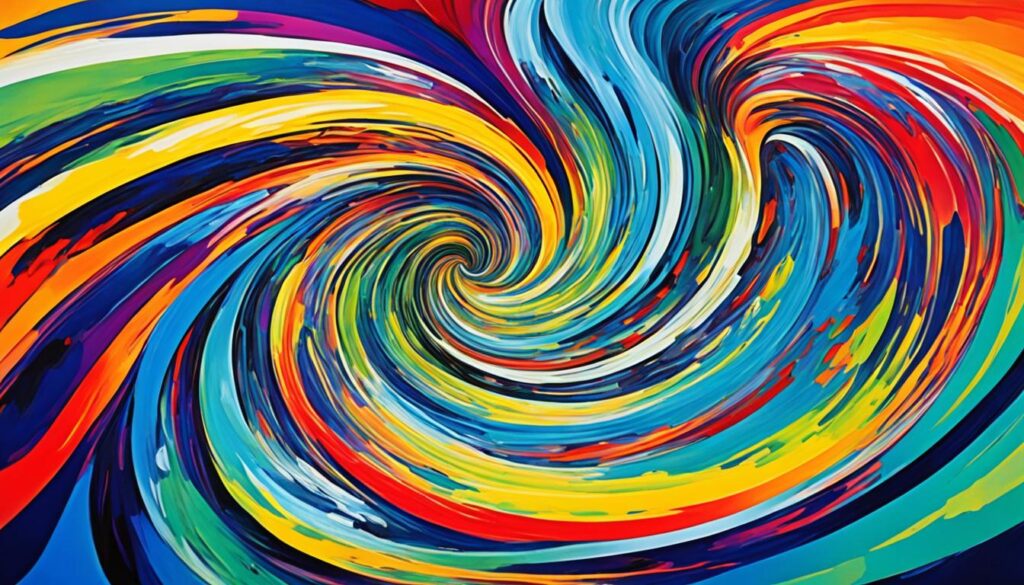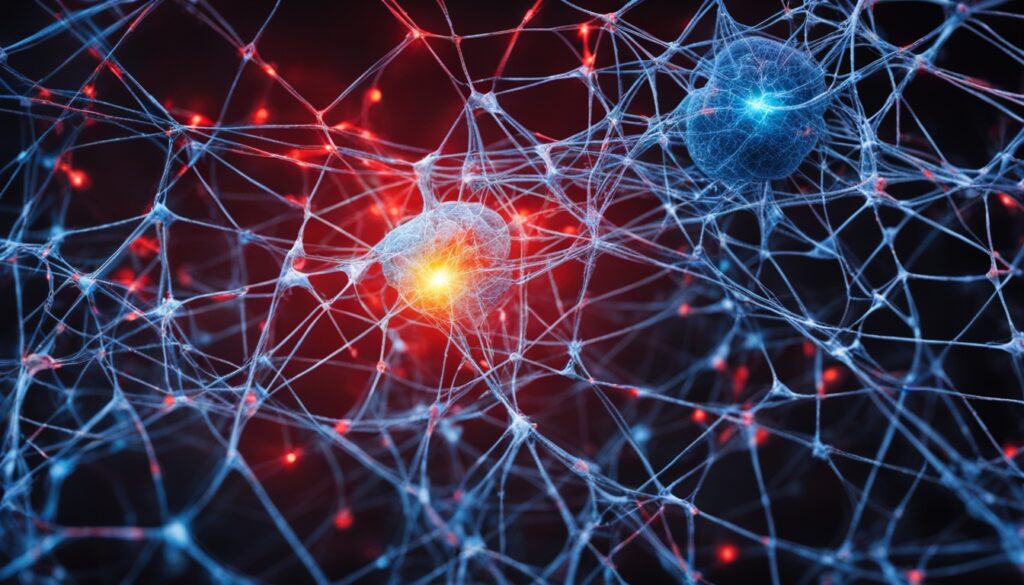Mania’s Grip: How Long Can a Manic Episode Last? – MindSterk

Did you know a manic episode can last days or weeks? It’s a main part of bipolar disorder, marked by extreme mood changes. Knowing how long manic episodes last and what affects their duration helps manage bipolar disorder.
During these episodes, people feel extremely happy and full of energy. They are very active and sleep less. After a manic episode, they often feel very sad, leading to ups and downs in their emotions and difficulties in daily life.
This guide will cover how long manic episodes last, the symptoms, and types of bipolar disorder. We’ll examine what starts these episodes and discuss diagnosis and treatment. Understanding manic episode duration helps people with bipolar disorder improve their life quality.
What is Bipolar Disorder?
Bipolar disorder is also called manic-depressive disorder. It’s a chronic mental illness with shifts between mania and depression.
During manic episodes, people feel extremely happy and full of energy. They might also act on impulse and need less sleep.
In depression, they feel sad and hopeless. Their energy drops, and they lose interest in fun activities. Concentration becomes hard, and sleep patterns change.
This disorder often starts in the late teens or early twenties. It can majorly affect a person’s life and daily functioning without treatment.
“Living with bipolar disorder can be challenging, but with proper treatment and support, individuals can effectively manage their symptoms and lead fulfilling lives.” – Dr. Mark Johnson, Psychiatrist
Managing bipolar disorder usually means taking medication, getting therapy, and making some lifestyle changes. Working with doctors to tailor a treatment plan is key.
Knowing more about bipolar disorder helps people seek the right help. It’s a big step towards stability and feeling better.
Bipolar Disorder Statistics:
| Statistic | Data |
|---|---|
| Prevalence of bipolar disorder in the United States | Approximately 2.8% of adults |
| The average age of bipolar disorder onset | Late adolescence to early adulthood |
| Percentage of bipolar disorder cases that are classified as severe | Approximately 10-20% |
| Number of people globally estimated to have bipolar disorder | Over 46 million |
Symptoms of Bipolar Disorder:
Bipolar disorder comes with symptoms that hugely affect a person’s mood and daily life. These symptoms include episodes of mania, depression, and sometimes both at once.
Manic Episode Symptoms:
During a manic episode, those with bipolar disorder might feel:
- Elevated mood: They often feel extremely happy, full of energy, or very irritable.
- Increased energy levels: They take on many projects, talk a lot, and their thoughts jump around.
- Risk-taking behaviours: They might spend too much, use substances, or act recklessly.
Depressive Episode Symptoms:
When in a depressive episode, someone with bipolar disorder may feel:
- Feelings of sadness: They frequently feel sad, hopeless, or empty.
- Loss of interest: They lose interest in activities they once loved.
- Physical and cognitive symptoms: They’re tired, eat differently, struggle to focus, feel guilty, and might think about suicide.

Mixed Episodes:
Mixed episodes have both manic and depressive signs at the same time. This causes complex feelings and behaviours. People might feel both hyper and very sad, have trouble sleeping, feel restless, and doubt themselves.
The length of these mood episodes can differ. They can last a week or more. How often they happen and how severe they are varies by person. These episodes can interfere with life, relationships, and happiness.
It’s vital to diagnose and treat bipolar disorder correctly. Recognizing symptoms and getting proper help lets people manage their condition and enjoy life.
Types of Bipolar Disorder:
There are three main types of bipolar disorder: bipolar I disorder, bipolar II disorder, and cyclothymic disorder. Each one has unique characteristics and mood patterns.
Bipolar I Disorder
Bipolar I disorder is the most severe kind. It’s marked by manic episodes lasting at least 7 days. These episodes include symptoms like high mood, more energy, fast thoughts, and risky behaviour.
People with bipolar I often have depressive episodes, too. These changes can make it hard for them to keep stable moods and daily routines.
Bipolar II Disorder
Bipolar II disorder is less severe than bipolar I. It features depressive episodes and hypomanic episodes. Hypomanic episodes are milder than mania and usually don’t disrupt life too much.
The depressive episodes in bipolar II are similar to those in bipolar I and can greatly affect a person’s mood and life quality.
Cyclothymic Disorder
Cyclothymic disorder is a chronic, mild bipolar disorder. People with this disorder have mild hypomanic and depressive symptoms. These symptoms aren’t as intense as full mania or major depression.
Even though the symptoms are milder, they can still upset a person’s life. That’s why it’s important to get the right diagnosis and treatment.
Knowing the different types of bipolar disorder helps to create effective treatment plans. It’s crucial to seek professional help to manage symptoms and improve well-being.
| Type of Bipolar Disorder | Main Features |
|---|---|
| Bipolar I Disorder | Manic episodes lasting at least 7 days, often accompanied by depressive episodes. |
| Bipolar II Disorder | Depressive episodes and hypomanic episodes that are less severe than full-blown mania |
| Cyclothymic Disorder | Recurring hypomanic and depressive symptoms that do not meet the criteria for full episodes |
Causes of Bipolar Disorder:
Scientists are still figuring out what causes bipolar disorder. It seems like genetics and the environment both play big roles. If your family has a history of bipolar disorder, your risk of getting it is higher. This has been proven through research.
Also, scientists have noticed differences in the brains of people who have bipolar disorder. This suggests that the condition might have a biological cause. They’ve found that some areas of the brain and certain brain chemicals are different in those with the disorder.
But it’s not just about genetics and brain structure. The environment matters, too. Stress, using substances, and not sleeping well can trigger bipolar episodes. These episodes can be manic or depressive.
To understand bipolar disorder, we need to keep studying how genetics, biology, and the environment work together. More research will help find better ways to treat and manage bipolar disorder. This could make life better for those who live with it.
Genetic and Environmental Factors in Bipolar Disorder:
| Genetic Factors | Environmental Factors |
|---|---|
| Family history of bipolar disorder | Stressful life events |
| Genetic variations related to brain function | Substance abuse |
| Impaired genetic regulation of mood-regulating neurotransmitters | Sleep disturbances |

Diagnosing Bipolar Disorder:
Bipolar disorder is a complex illness that swings between manic and sad states. It needs a detailed checkup to diagnose. This includes physical exams, tests, and looking into mental health.
A mental health expert, like a psychiatrist, carefully examines the patient’s symptoms. They look at how severe and frequent these episodes are and also check the patient’s and their family’s medical history.
Doctors perform medical tests to ensure it’s not something else. These can include blood work and brain scans.
Physical Exam
Checking the patient’s physical health is key in finding bipolar disorder. This exam finds any health issues or substances affecting them. It helps rule out other reasons for their symptoms.
Mental Health Evaluation
The professional talks about the patient’s mental health signs in the mental health check. They ask about manic and sad states, how often they happen, and if they interfere with daily life. Questions about family, past traumas, and substance use are also included.
“The accurate diagnosis of bipolar disorder is crucial for developing an appropriate treatment plan. A comprehensive evaluation ensures that the individual receives the support they need to effectively manage their condition.” – Dr. Emily Peterson, Psychiatrist
Diagnosing bipolar disorder combines physical checks, tests, and mental health assessments. This way, doctors can correctly identify it and find the best way to help the patient manage it.
Treating Bipolar Disorder:
Treatment for bipolar disorder uses a mix of medication and psychotherapy. This approach helps individuals control their symptoms and better their lives.
Mood stabilizers and atypical antipsychotics are the go-to medications. They balance brain chemicals and steady mood swings. Working closely with a healthcare provider is crucial to find the right medication mix.
Psychotherapy, like cognitive-behavioural therapy, offers great support. It equips individuals with skills to handle their condition. Therapy helps manage stress, spot triggers, and stay stable day-to-day.
“Psychotherapy provides individuals with support, education, and coping strategies to navigate the challenges associated with bipolar disorder.”
Each person’s battle with bipolar disorder is different. Thus, treatment must be customized to each one’s needs. Teaming up with a healthcare provider is vital to combine the right meds and therapy.
Benefits of Medication and Psychotherapy:
Medication and psychotherapy together bring big gains for those with bipolar disorder. Medication handles mood stability and symptom control. It cuts down on manic and depressive episodes. Psychotherapy offers key support and techniques to understand the disorder, face stress, and make lifestyle changes.
| Benefits of Medication | Benefits of Psychotherapy |
|---|---|
| Stabilizes mood fluctuations | Offers support and guidance |
| Reduces the frequency and severity of mood episodes | Provides education about bipolar disorder |
| Improves overall functioning and quality of life | Teaches coping strategies and stress management techniques |
| Prevents relapse and hospitalization | It helps identify triggers and early warning signs |
Combining medication and psychotherapy maximizes treatment success for bipolar disorder. Commitment to treatment and open dialogue with healthcare providers are keys to managing the condition effectively.
Triggers of Manic Episodes:
Many factors can trigger manic episodes, and they vary from person to person. It’s key for those with bipolar disorder to know their triggers. This helps manage or stop episodes from happening.
Stimulating Situations: Manic episodes can be set off by very stimulating environments. These include busy offices, big social events, or intense exercise routines.
Major Life Changes: Big life changes can also lead to manic episodes. This happens when people move, start or end relationships, or switch jobs. The stress from these events can upset the stability needed by someone with bipolar disorder.
Lack of Sleep: Not getting enough sleep can lead to manic episodes. This could be because of insomnia, changing time zones, or an inconsistent sleep schedule. These issues can upset the body’s natural balance and make moods unstable.
Substance Use: Using drugs or alcohol can trigger or worsen manic episodes. These substances mess with the brain and affect mood stability. This makes a person more prone to manic episodes.
To manage bipolar disorder well, it’s very important to recognize what triggers manic episodes. By staying away from these triggers, keeping a regular sleep pattern, and not using substances, individuals can help maintain their stability and well-being.
| Triggers of Manic Episodes in Bipolar Disorder |
|---|
| Stimulating Situations |
| Major Life Changes |
| Lack of Sleep |
| Substance Use |
Conclusion:
Knowing how long manic episodes last is key to managing bipolar disorder well. These episodes can go on for days or weeks. They usually come before depressive episodes.
Those with bipolar disorder must get the right diagnosis and treatment. Plus, ongoing support is needed to handle symptoms and better their lives.
Working with doctors and using the right strategies can help people with bipolar disorder live well. This might mean taking certain medications and going for therapy. Both help deal with the ups and downs of the disorder.
Having good support and ways to manage the disorder can make a big difference. Keeping in touch with doctors, following treatment plans, and caring for oneself can help. These steps lead to better stability and happiness for people with bipolar disorder.






